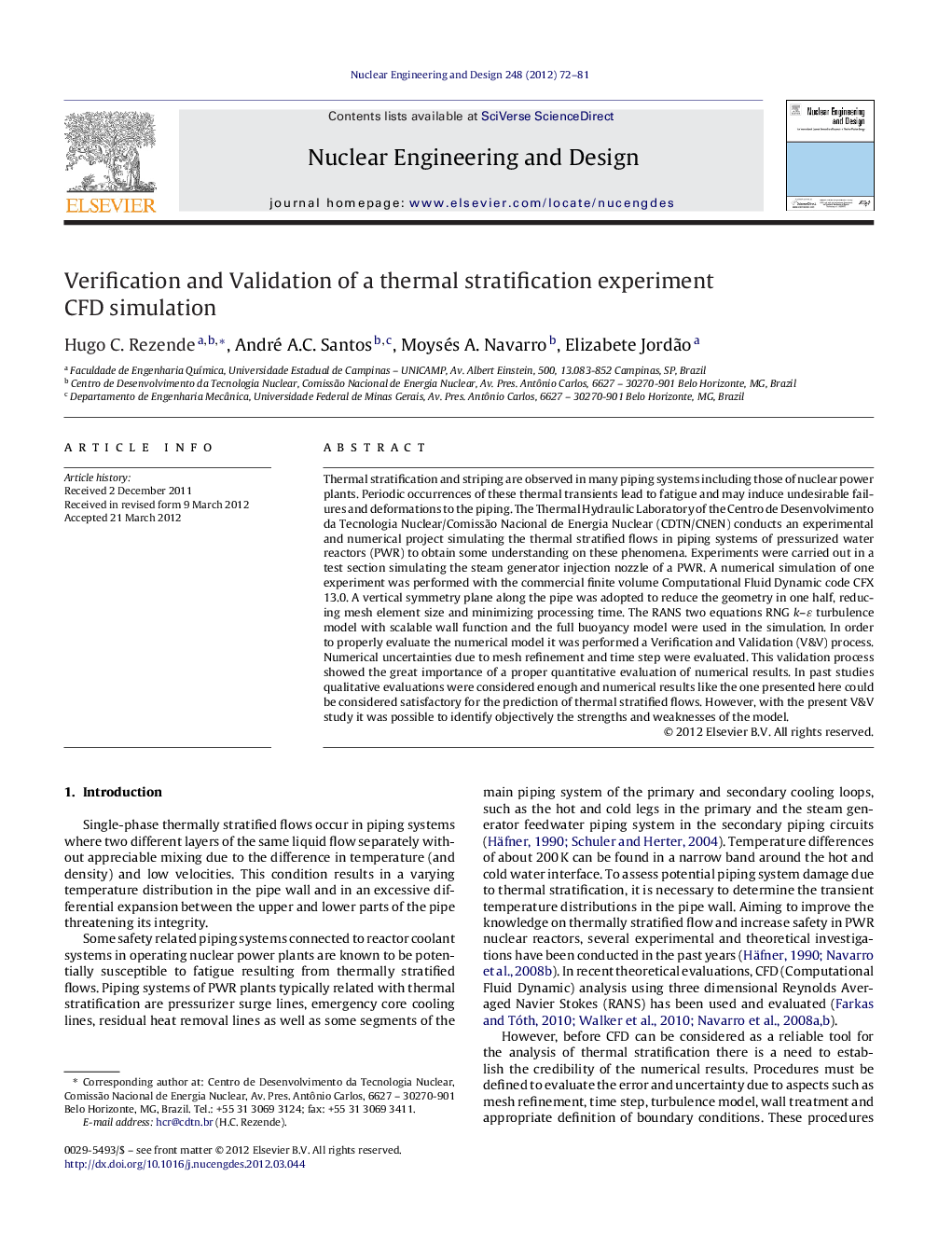| Article ID | Journal | Published Year | Pages | File Type |
|---|---|---|---|---|
| 297213 | Nuclear Engineering and Design | 2012 | 10 Pages |
Thermal stratification and striping are observed in many piping systems including those of nuclear power plants. Periodic occurrences of these thermal transients lead to fatigue and may induce undesirable failures and deformations to the piping. The Thermal Hydraulic Laboratory of the Centro de Desenvolvimento da Tecnologia Nuclear/Comissão Nacional de Energia Nuclear (CDTN/CNEN) conducts an experimental and numerical project simulating the thermal stratified flows in piping systems of pressurized water reactors (PWR) to obtain some understanding on these phenomena. Experiments were carried out in a test section simulating the steam generator injection nozzle of a PWR. A numerical simulation of one experiment was performed with the commercial finite volume Computational Fluid Dynamic code CFX 13.0. A vertical symmetry plane along the pipe was adopted to reduce the geometry in one half, reducing mesh element size and minimizing processing time. The RANS two equations RNG k–ɛ turbulence model with scalable wall function and the full buoyancy model were used in the simulation. In order to properly evaluate the numerical model it was performed a Verification and Validation (V&V) process. Numerical uncertainties due to mesh refinement and time step were evaluated. This validation process showed the great importance of a proper quantitative evaluation of numerical results. In past studies qualitative evaluations were considered enough and numerical results like the one presented here could be considered satisfactory for the prediction of thermal stratified flows. However, with the present V&V study it was possible to identify objectively the strengths and weaknesses of the model.
► Thermal stratification in PWR piping was numerically and experimentally studied. ► Verification and Validation was performed according to ASME V&V 20 standard. ► Numerical and experimental transient temperature behavior showed good agreement. ► V&V enable the objective identification of the strengths and weaknesses of the model.
